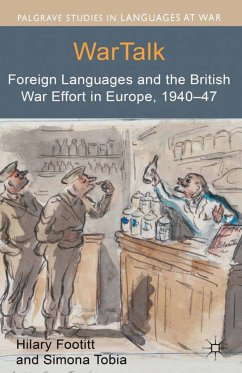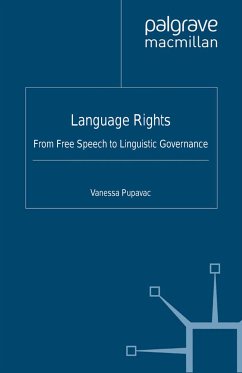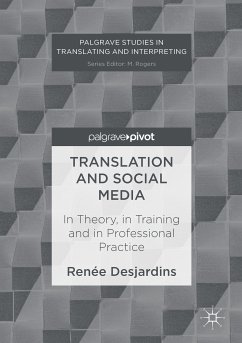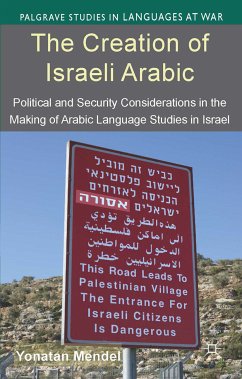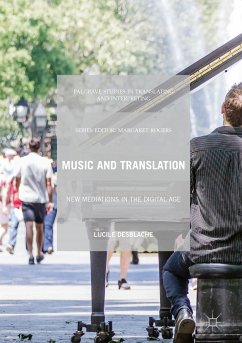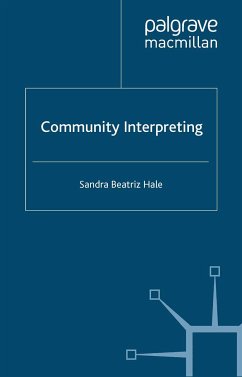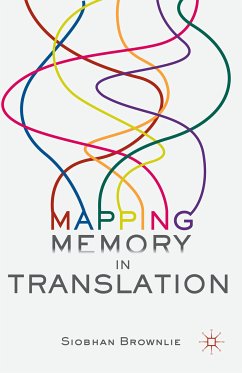
Siobhan Brownlie
eBook, PDF
Mapping Memory in Translation (eBook, PDF)
Versandkostenfrei!
Sofort per Download lieferbar
Weitere Ausgaben:

PAYBACK Punkte
20 °P sammeln!






This book presents a map of the application of memory studies concepts to the study of translation. A range of types of memory from personal memory and electronic memory to national and transnational memory are discussed, and links with translation are illustrated by detailed case studies.
Dieser Download kann aus rechtlichen Gründen nur mit Rechnungsadresse in A, B, BG, CY, CZ, D, DK, EW, E, FIN, F, GR, HR, H, IRL, I, LT, L, LR, M, NL, PL, P, R, S, SLO, SK ausgeliefert werden.
- Geräte: PC
- ohne Kopierschutz
- eBook Hilfe
- Größe: 1.66MB
- Text-to-Speech
- E-Mail des Verlags für Barrierefreiheitsfragen: accessibilitysupport@springernature.com
- Keine Einschränkung der Vorlesefunktionen, außer bei spezifischen Ausnahmen
- Keine oder unzureichende Informationen zur Barrierefreiheit
Siobhan Brownlie is Lecturer in Translation and Intercultural Studies at the University of Manchester, UK. She is programme director of the Masters in Intercultural Communication and her recent research has focused on Memory Studies in relation to Translation Studies and Intercultural Studies. Siobhan's previous publications include Memory and Myths of the Norman Conquest (2013).
Produktdetails
- Verlag: Palgrave Macmillan UK
- Seitenzahl: 228
- Erscheinungstermin: 8. April 2016
- Englisch
- ISBN-13: 9781137408952
- Artikelnr.: 44904553
Report
The proposed study begins from the very justified assumption that 'memory and language are intimately bound together', and that translation is therefore inseparable from memory. It then proposes four categories of memory in which translation plays a part, concluding with a call for further interdisciplinary research.
The proposal states that little work has been done so far on the interface of memory studies and translation studies. I agree entirely (Bella Brodzki's important work does not engage with translation studies to a really relevant extent). Yet this is clearly an interface with very rich potential, and an overview study that would draw out carefully the mutual theoretical enrichments that are possible
The proposed study begins from the very justified assumption that 'memory and language are intimately bound together', and that translation is therefore inseparable from memory. It then proposes four categories of memory in which translation plays a part, concluding with a call for further interdisciplinary research.
The proposal states that little work has been done so far on the interface of memory studies and translation studies. I agree entirely (Bella Brodzki's important work does not engage with translation studies to a really relevant extent). Yet this is clearly an interface with very rich potential, and an overview study that would draw out carefully the mutual theoretical enrichments that are possible
Mehr anzeigen
between the two areas would make a very welcome and productive contribution to current scholarly debate.
The choice of chapter headings in the proposal strikes me as excellent - the headings are enticing and coherent, promising to cover an impressive range of different facets. The basic structure of discussion plus case study should work well, and the case studies seem both interesting and relevant - although, of course, it is never easy to arrive at a perfect balance between theory and textual study, and this is something that will need careful handling when the book is written. In Chapter 5, the goal of 'encompassing' many different aspects could cause some problems. In particular, it will not be easy to combine high-level notions of transnational memory with the practical level of TM software. To do so, the author will presumably need to apply the theoretical apparatus of science and technology studies regarding 'the agency of things', yet without becoming distracted or creating confusion through a plethora of different frameworks. Chapter 5, in other words, is ambitiously framed and may be difficult to carry off successfully in the form presented in the proposal. If it can be done, all the better! This is certainly a fascinating area.
I am not qualified to comment on the author's engagement with recent work in memory studies, but she is clearly more than conversant with the translation studies context. However, given the enormous amount of material and the wide spectrum of different, yet relevant theoretical approaches, there is bound to be a danger of skimming across the surface of a large number of points rather than digging deep. Although I absolutely accept the objective of providing an overview, I think the impact of that overview will be most lasting if the author can ensure a profound engagement with the individual approaches that she examines. Will 70,000 words be enough to present a truly original and profound analysis? (This is a genuine question, not a criticism!)
Specifically, I am a little concerned that the proposal does not highlight aspects of, or concepts of, translation that go beyond the practical. For example, Chapter 1 seems to match a wide notion of memory with a narrow notion of translation. I wonder if this is an opportunity missed - however, it may merely be a matter of wording in the proposal. Either way, I would encourage the author to look at translation beyond the strictly 'interlingual' (in other words, the whole area of 'cultural translation' and the debate on construction of cultures and languages through translation), since this is where perhaps some of the most interesting interfaces with memory studies may arise.
I am familiar with Dr Brownlie's article on 'Translation and the Deconstruction of Memory in a Network of Great Historical Documents', as well as other items of her work. She writes well and draws on sound scholarship, and I believe she is well qualified to tackle this challenging project.
Because of its nature as an overview and introduction, the book should prove a useful addition to university library holdings in translation studies, particularly on courses with a focus on cultural and historical approaches to translation and particularly at
The choice of chapter headings in the proposal strikes me as excellent - the headings are enticing and coherent, promising to cover an impressive range of different facets. The basic structure of discussion plus case study should work well, and the case studies seem both interesting and relevant - although, of course, it is never easy to arrive at a perfect balance between theory and textual study, and this is something that will need careful handling when the book is written. In Chapter 5, the goal of 'encompassing' many different aspects could cause some problems. In particular, it will not be easy to combine high-level notions of transnational memory with the practical level of TM software. To do so, the author will presumably need to apply the theoretical apparatus of science and technology studies regarding 'the agency of things', yet without becoming distracted or creating confusion through a plethora of different frameworks. Chapter 5, in other words, is ambitiously framed and may be difficult to carry off successfully in the form presented in the proposal. If it can be done, all the better! This is certainly a fascinating area.
I am not qualified to comment on the author's engagement with recent work in memory studies, but she is clearly more than conversant with the translation studies context. However, given the enormous amount of material and the wide spectrum of different, yet relevant theoretical approaches, there is bound to be a danger of skimming across the surface of a large number of points rather than digging deep. Although I absolutely accept the objective of providing an overview, I think the impact of that overview will be most lasting if the author can ensure a profound engagement with the individual approaches that she examines. Will 70,000 words be enough to present a truly original and profound analysis? (This is a genuine question, not a criticism!)
Specifically, I am a little concerned that the proposal does not highlight aspects of, or concepts of, translation that go beyond the practical. For example, Chapter 1 seems to match a wide notion of memory with a narrow notion of translation. I wonder if this is an opportunity missed - however, it may merely be a matter of wording in the proposal. Either way, I would encourage the author to look at translation beyond the strictly 'interlingual' (in other words, the whole area of 'cultural translation' and the debate on construction of cultures and languages through translation), since this is where perhaps some of the most interesting interfaces with memory studies may arise.
I am familiar with Dr Brownlie's article on 'Translation and the Deconstruction of Memory in a Network of Great Historical Documents', as well as other items of her work. She writes well and draws on sound scholarship, and I believe she is well qualified to tackle this challenging project.
Because of its nature as an overview and introduction, the book should prove a useful addition to university library holdings in translation studies, particularly on courses with a focus on cultural and historical approaches to translation and particularly at
Schließen
Für dieses Produkt wurde noch keine Bewertung abgegeben. Wir würden uns sehr freuen, wenn du die erste Bewertung schreibst!
Eine Bewertung schreiben
Eine Bewertung schreiben
Andere Kunden interessierten sich für


